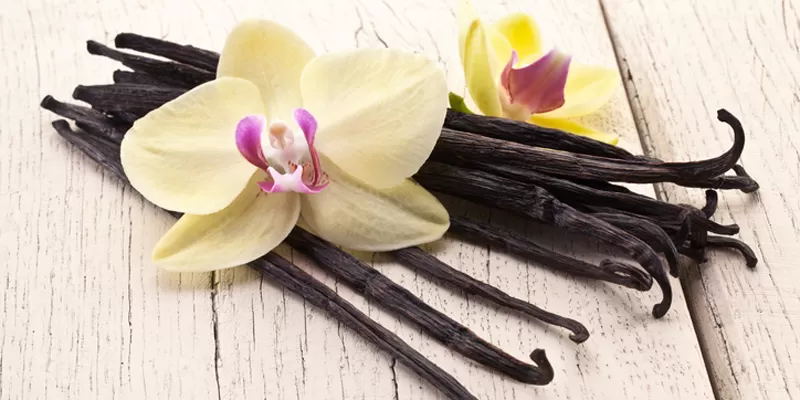Natural vanilla is an expensive product, because it is not mass-produced due to the difficulty of growing orchid flowers, from which, in fact, this product is obtained. So an alternative appeared — vanilla sugar and vanilla. How do these flavors differ from each other and is it worth giving preference to something one? Our experts have figured this out.

Features of vanilla sugar
Vanilla sugar is a mixture traditionally used in cooking to create all kinds of pastries. Often it is put in the base (cream, dough), fruit and berry compotes, added to coffee, milk-based cocktails, even used as a sprinkle on finished culinary products.
It is created by mixing ordinary granulated sugar or powdered sugar with artificial vanillin or natural vanilla pods. Vanilla sugar is produced on an industrial scale in accordance with certain GOST standards. There are rare options when granulated sugar is mixed in strict proportions with vanilla bean powder.
Vanilla sugar, if desired, can easily be made at home. To do this, you need classic granulated sugar and a few vanilla pods. There are 2 ways to make a product.
-
Method number 1. Sugar must be poured into a glass jar with a tight-fitting lid. Then put a whole vanilla pod in there. Be sure to use only one that has gone through a full fermentation (it will have an elastic structure and a dark brown color, possibly even black). Close the jar with a lid and send it to a dark place for a couple of weeks.
-
Method number 2. Sugar must, as in the first case, be poured into a glass jar. Then take the vanilla pods and, cutting lengthwise, remove the seeds from them. Grind them thoroughly, add to sugar. Finely chop the peel and also add to the sugar. Close the lid tightly, leave in a dark place for several days. With this method of manufacture, strict proportions should be observed: for 1 kg of granulated sugar, use 1 vanilla pod.
Features of vanillin

Vanillin is made both from a natural product and a synthetic method. Since the first option is quite expensive, an artificial vanilla substitute is used in mass production. It is noteworthy that in terms of the strength of the aroma and taste characteristics, it is not inferior to natural.
One of the main advantages of artificial vanillin over natural vanillin is its cheapness, which made it possible to launch mass production for use in the bakery and confectionery industry, perfumery and even tobacco.
An analogue of natural spice has a sharper taste with an admixture of bitterness and available in several variations:
-
Crystals — the maximum concentration. The resulting substance retains its original aromatic and taste properties for a very long time, without losing them even during heat treatment. Crystalline vanillin has a pronounced taste, therefore it is added only to pastries, in a strictly metered amount.
-
Powder — vanillin, mixed with powdered sugar in a certain proportion — has a moderately pronounced aromatic properties.
-
Extract — in fact, it is vodka vanilla tincture. Vanillin in liquid form is usually used in perfumery or confectionery (for impregnating cakes). It must not be heat treated.
Similar features and differences
Both vanillin and vanilla sugar are very similar in their properties and are used for the same purposes:
-
Giving drinks a light vanilla aroma and a more delicate taste;
-
Strengthening the aroma of ready-made dishes or flavoring their individual ingredients;
-
Giving confectionery products a more pronounced taste and appetizing aroma;
-
Stimulation of endorphin production.
As for the differences, there are 2 main ones:
-
Aroma content – Vanillin is certainly a highly concentrated flavor, while vanilla sugar contains a small amount of aromatics;
-
Production method — vanilla sugar is made in a completely natural way, vanillin is synthetic (although, as mentioned earlier, it is possible to create this flavor from vanilla pods).
When and what is better to apply?
Since the taste qualities of the flavors in question are quite difficult to distinguish (even for a professional), the choice of the appropriate option should be based on personal preferences and the amount of sweetness in the final product.
For unsweetened confectionery products, vanillin is more suitable, since in this case it will not be the best option to achieve a pronounced aroma with vanilla sugar. Vanillin is especially popular as an additive in various drinks, including alcoholic ones (especially all kinds of liqueurs).
Vanilla sugar is ideal for confectionery products that do not require baking and cream. Perfectly complements the taste of baking, if you add it to the base (for example, dough). A great option for adding a subtle taste to various sauces, cereals, cocktails, casseroles.

Добавить комментарий
Для отправки комментария вам необходимо авторизоваться.